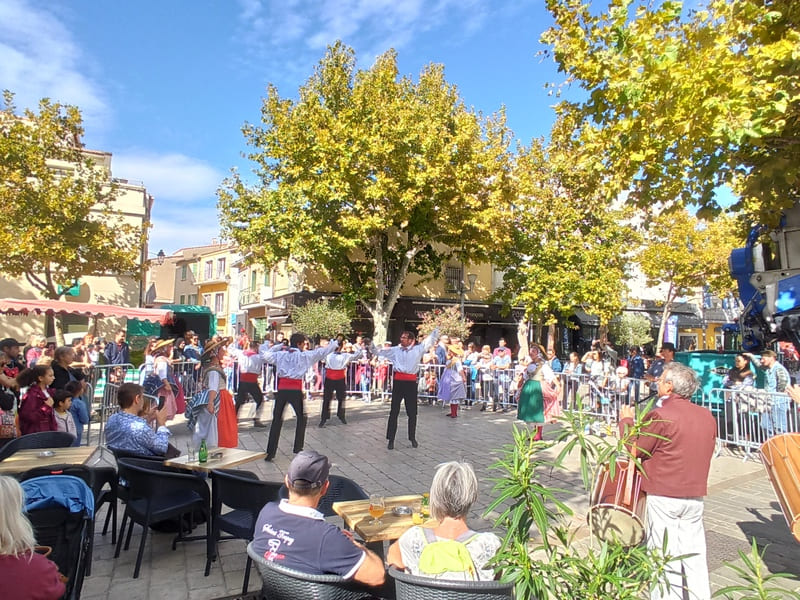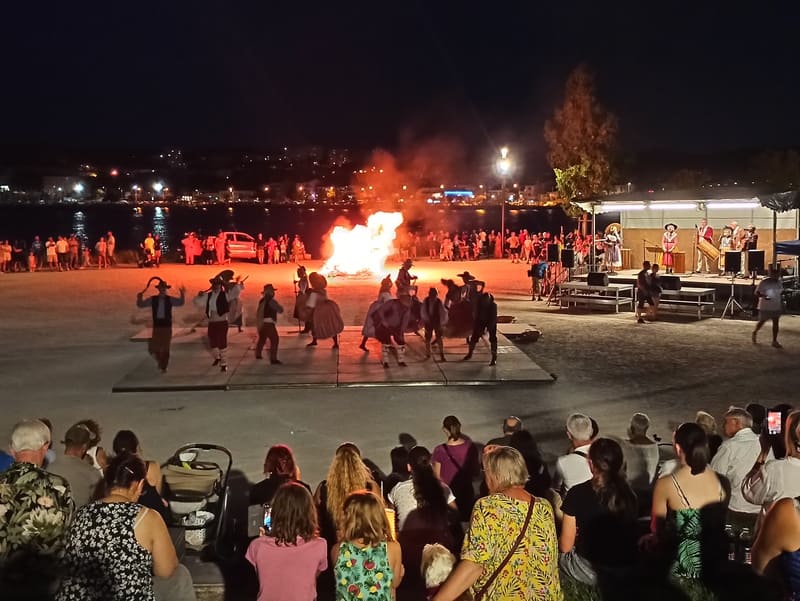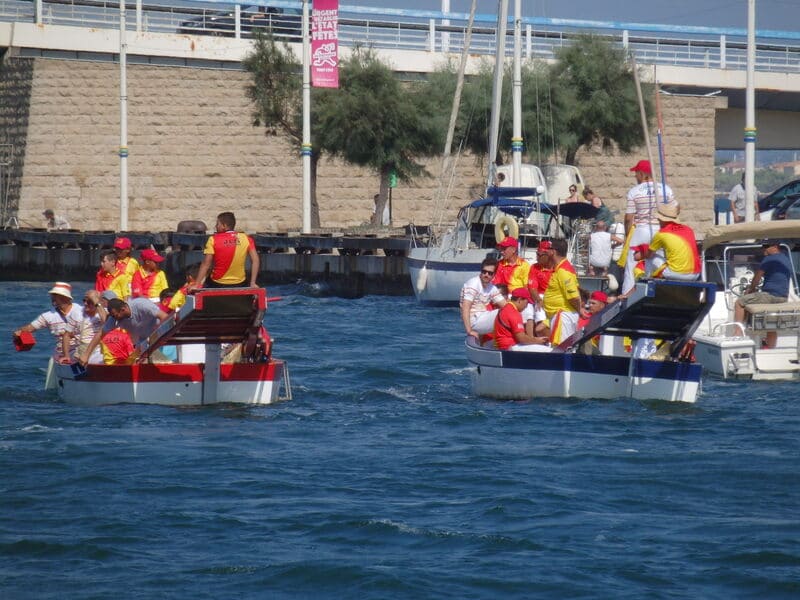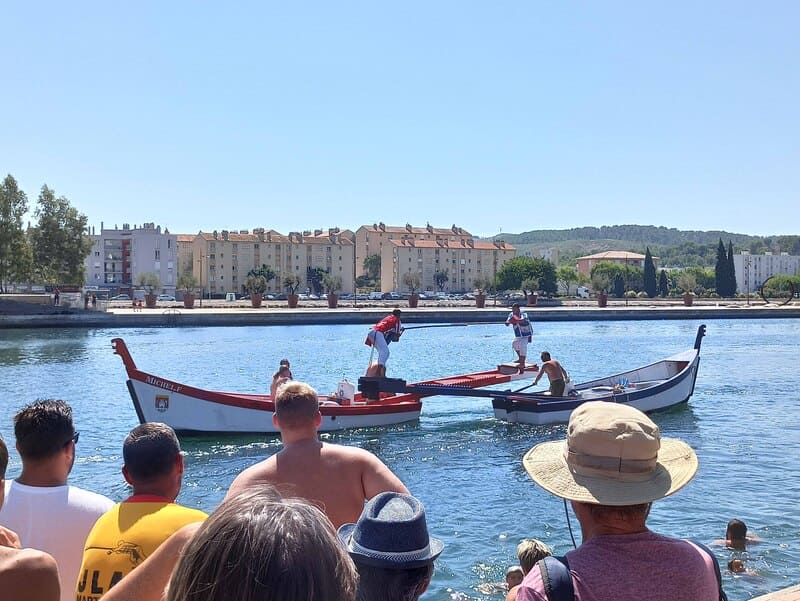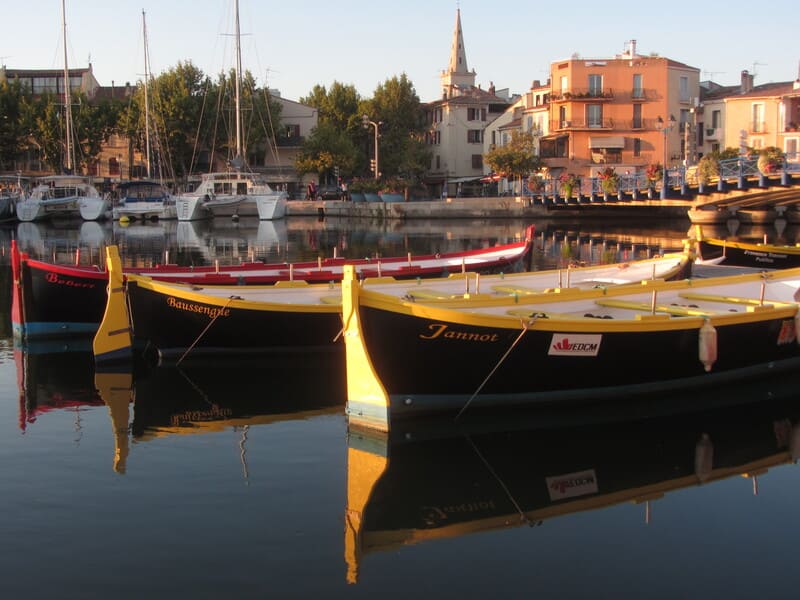From traditions to popular sports
Martigues loves popular traditions, Martigues loves traditional sports and games. What festivals, arts and sports are part of our cultural heritage?
La Capouliero: Popular Arts and Traditions of Provence
Did you know ?
In Provence, dance played such an essential role that a bad dancer was often despised! La Capouliero has been an essential association in the life of the Martegal city since 1963.
A common passion drives young and old
- Singing and the Provençal language.
- Dance.
- The music.
- The suit.
- The kitchen.
La Capouliero remains involved in everything related to the culture of OC. She knew how to evolve with her time and gives the image of a dusted off folklore. It carries essential benchmarks such as pluralism, tolerance, peace...
- Dance.
- The music.
- The suit.
- The kitchen.
La Capouliero remains involved in everything related to the culture of OC. She knew how to evolve with her time and gives the image of a dusted off folklore. It carries essential benchmarks such as pluralism, tolerance, peace...
Find the Capou on the occasion of the popular festivals organized in Martigues
- Lei Fieloua animates the streets of Jonquières (in February): The dance of the fieloua (or fielouso, distaff) is part of the carnival cycle in Provence.
- The fires of Saint John (in June): in Provence, we seize the slightest opportunity to celebrate traditions, and that of the fires of Saint John is not about to go out!
- Festival of the Sea and of Saint Peter (early summer): water and maritime traditions are the basis of Martegal identity. Folk dances, procession of the statue of Saint Peter, jousting tournament, games of yesteryear...
- Aioli competition (in July).
- Martigues celebrates its terroir (early October).
- Competition and exhibition of Provençal cribs (in November).
- Calendal vigil (in December).
- Christmas carols and music.
Major popular festivals
- The bonfires of Saint John (in June)
Unmissable event at the start of summer in Martigues. It's sacred, even the locals will tell you, native Martégaux or proud defenders of ancestral customs. Saint John is loaded with symbols. It celebrates the summer solstice, sunny days, joie de vivre and love, and the start of harvest. Joy, friendliness, sense of celebration, hence the presence of folk dance groups, animated by fifes, tambourines and other traditional instruments. The most courageous dancers jump over the brazier, arousing the admiration of the young girls and ensuring, it seems, the marriage in the year!
- The Festival of the Sea and Saint Peter (early summer)
Folklore or tradition?
Beware of nuance: in Martigues, the Fête de la Mer is a tradition ! The difference: folklore pays homage to past eras, while tradition lives on. And it remains very current and very much alive! In Martigues, the maritime environment is more than an asset of the city, it is the city! Thus, everything related to aquatic activities, starting with fishing, is part of a real local culture. The famous Fête de la Mer and Saint-Pierre, patron saint of seafarers, is the “official” annual celebration, due to its sacred, pagan and popular unfolding, making it accessible to all. During these festivities follow one another the spectacular religious ceremony on land, a procession where the saint is carried on the back of a man... or on the sea, surrounded by an impressive flotilla of fishermen and curious people, the priest blesses the sheaf in homage to the disappeared at sea), and popular festivities over the animations and musical atmospheres.
- The Venetian Evening (early July)
Created in 1928, this event makes a return to tradition with the parade of floats on the canals of Martigues. Logical idea when you know that the organizers were professionals of the sea. The immense success of this event, its originality, then its transformations over the years, make this great festive event (and now known outside our borders ), a key moment in the events of the Martegal summer. This evening is also a grandiose pyromelodic show by world-renowned pyrotechnicians, music and street entertainment.
- The Carro Festival (end of July)
The Carro Festival was born almost 60 years ago, it has become a must on the blue coast. Admire or take part in petanque competitions with the greatest players in the region every afternoon. Young and old find the opportunity for a stroll by the sea and an unparalleled sunset before embarking frantically on the thrill rides! Grand ball on Saturday evening and closing fireworks on Tuesday.
The game of Provençal jousting: the targo
What is a "targaire"?
He is a follower of the "targo", the name of the naval jousting which is a tradition more than three hundred years old in Provence.
The Provençal jousting game differs from the classic jousting game by a shorter spear and a narrower Tinteino (platform). The Targo provençalo is practiced in France on the Mediterranean coast. It remains the characteristic sporting element of votive festivals in southern cities.
The Provencal joust is a confrontation on the water between two people, each on a boat, at the top of a plateau called in Provence tint. The boats are heading towards each other and the goal of this fight is to push your opponent into the water with a spear. Protection is provided by a wooden shield that the jouster carries on his left. The Provençal joust is characterized by its violence and its extreme codification.
The attacks between the players are manly and the dives spectacular.
The traditional train
What is the origin of this sport?
The origin of the traditional oar goes back to the time when the fishermen, once the work was done, organized races to return to the port in order to sell the fruit of their fishing there. Traditional rowing is practiced on boats of 600 kg and 7m20 in length with 6 rowers and a coxswain, mainly in the south of France, all around the Mediterranean. The boat is reminiscent of the old fishing boats, but here the hull is made of fiberglass and polyester resin, the benches, sides and oars are made of wood. All traditional rowing boats must be approved by the Fédération Française de Joute et de Sauvetage Nautique.




